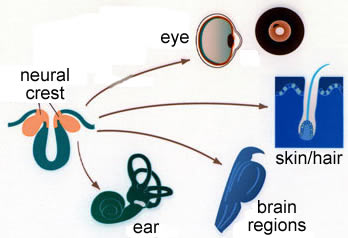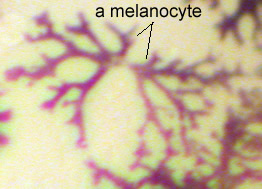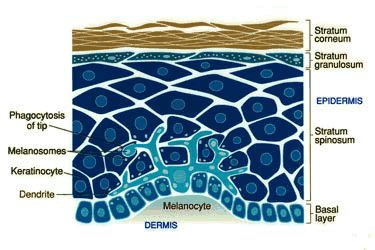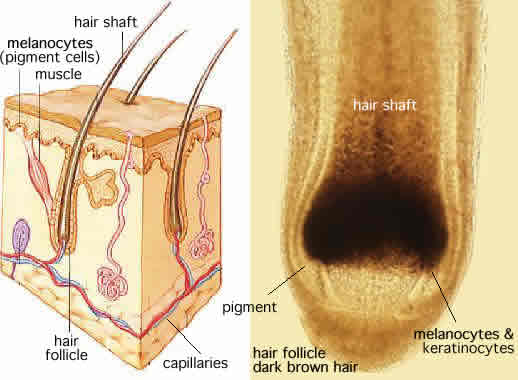Now that your
know how hair gets its color, you should be able to make the connection
between poliosis and vitiligo. If melanocytes disappear from
an area of skin, the skin and the hairs that grow out from
it will be unpigmented -- that is, white.
So what can make
this happen? The answer is not conclusively known, but likely
to involve what is known as an auto-immune
disorder.
Basically, what
it thought to happen is that your immune system, which normally fights
off external parasites and pathogens (viruses and bacteria), makes
a mistake and attacks some of your own normal cells.
If your immune system
kills the melanocytes in a region of the skin (or they die for some
other reason), the supply of pigment will disappear and the skin will
become unpigmented.
Remember, melanocytes
are derived from melanoblasts that migrated to the skin during
embryonic development.
If the autoimmune
response kills melanocytes, but leave melanoblasts -- the skin could
become repigmented. If the melanoblasts are killed, it will remain
unpigmented.
The condition is
in itself not dangerous, but it can be a sign of a susceptibility to
other auto-immune diseases.
You should watch
your immune system carefully by routine visits to a physician. If
a more dangerous condition were to appear you could treat it early.
|




